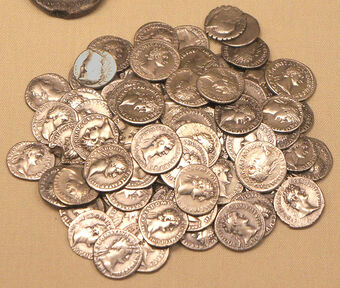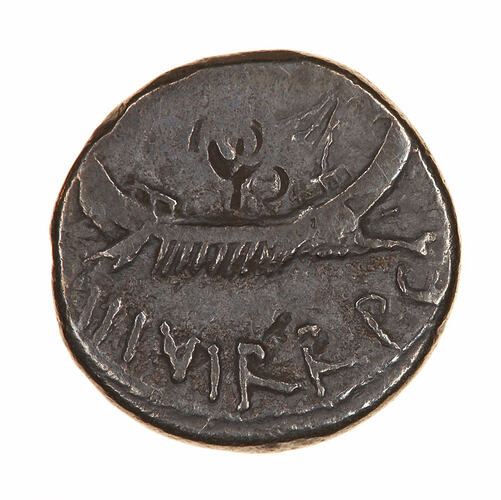- Dec 30, 2020 I believe that your coin is a denarius of Severus Alexander with a reverse that I think depicts Jupiter. He ruled from 222 to 235 A.D. After ascending to the throne at 13. Additionally, if I were you, I’d highly recommend paying a visit to Wildwinds.com, which is essentially a massive database of Greek, Roman, and Byzantine coins.
- All Categories Norway before 1814 Christian IV Frederik III Christian V The Middle East Gold coins Silver coins Bronze and copper Greek & Roman Greek coins Roman coins Byzantine coins Norway 1814 - 1874 Norway Banknotes America Asia Europe Miscellaneous Medals Literature Antiques Worldwide Africa America Asia Europe Australasia Norway after.
Denarius is a new cryptocurrency based off the original Bitcoin Core by Satoshi Nakamoto. Denarius is down 16.35% in the last 24 hours. The current CoinMarketCap ranking is #1139, with a market cap of $1,718,434 USD. It has a circulating supply of 7,496,916 D coins and a max. Supply of 10,000,000 D coins. The top exchanges for trading in Denarius are currently TradeOgre, and SouthXchange.
How Much Is A Denarius Worth Today
Roman silver coins
After the initial Roman coinage based on the as and its system in bronze, the expansion of the commerce to east and and the Magna Graecia imposed the use of coins with high intrinsic value. The first step in such direction was the mintage of the didrachm, a silver coin derived by the Greek drachma.
The first silver coin derived by the Roman monetary system based on the as was the denarius, with a value equal to 10 asses and a weight of 4.5 grams (1/72 of a Roman pound). Its name comes from 'deni', meaning 'ten times', pointed out by the value mark X.
Also for the denarius, as for the as, the issue date is uncertain, but the most commonly accepted timing is during the first two Punic Wars (first 264-241 BC, 218-202 BC), to face the consistent war expenses.
In the first issues the obverse depicted the head of Rome with a winged and crested helmet, while the reverse represented the twins of the Dioscuris horseback, with the inscription 'ROMA'. In following age the subjects were linked to the aristocratic families of the moneyer as means of politic propaganda. At the end of the republican era, the images used in the silver coins were the ones of the principal personalities of the Roman public life.
An interesting evolution of the denarius at the end of the republican era was the introduction of the serrated denarii, introducing the serrated edges as anticounterfeiting measure, both to prevent the removal of metal from the edges of the coin, and to show that the inner coin was produced with the same precious metal of the two faces.
Following of the progressive decrease of the value of the as, in the 118 BC the denarius was revalued, bringing its value to 16 asses, as pointed out by the mark XVI on the of the coin; the three letters were written one above to the other, in a monogram resembling an asterisk.
Fractions of the denarius
As fractions of the denarius there were:
| Coin | Ratio with the denarius | Ratio with the as | Mark |
|---|---|---|---|
| Denarius | 1 denarius | 10 as | X |
| Quinarius | 1/2 denarius | 5 as | V |
| Sestertius | 1/4 denarius | 2,5 as | IIS or HS |
The quinarius had a value equal to 1/2 denarius or 5 asses and it was identified by the numeral V
The sestertius was equal to 1/4 of denarius or 2.5 asses, from which the name 'semis tertius'; the used mark was IIS (II =2 asses and S = 1 semisse), with the 'II' at a later stage transformed in 'H.'
To have a full picture of the Roman silver coins, it's worth to remember the circulation of the victoriatus in, parallel to the denarius. Based on the silver content of the victoriatus. (65% of 3,37 g, i.e. 2,19g of silver) in comparison to the one of the denarius (95-98% of 4,55g, i.e. 4,32 g. of silver), the intrinsic value of the denarius was double compared to victoriatus. Therefore, the victoriatus had a value equal to the one of the quinarius, but it was used mainly in areas of Greek influence, like the Magna Graecia.
The denarius remained for centuries at the base of the Roman coinage, up to its substitution by the Antoninianus as silver coin in mid III century BC. To testify the importance of this coin remains the Italian name 'denaro' for money, the use of the letter 'd' as abbreviation for the denier coined by Carlomagno and for the British penny before the 1971 decimalization. Currently the name survives in Islamic countries in coins derived by the ancient dinar gold coin.
Bible Question:
What is a denarius, a shekel, a stater and a widow's mite?
Bible Answer:
Three coins that appear in the gospels are the denarius, shekel, stater and the widow’s mite. The denarius appears most often and the shekel and widow’s mite appear only once.
The Denarius Coin
The denarius is the coin that appears most often in the gospels. It occurs five times in the gospel of Matthew (Matthew 20:2, 9, 10, 13; 22:19). It occurs once in Mark (Mark 12:15), once in Luke (Luke 20:24) and once in Revelation (Revelation 6:6). This silver coin was normally minted in the city of Rome and carried the image of a caesar on one side.[1]
The coin was valued at the amount of money an average laborer would earn in one day or the pay for a Roman soldier.[2] That is, the denarius was the normal wage for one day of labor. For example, in the parable of the laborers in the vineyard in Matthew 20:2, a worker was hired for one day and his pay was one denarius.
For the kingdom of heaven is like a landowner who went out early in the morning to hire laborers for his vineyard. When he had agreed with the laborers for a denarius for the day, he sent them into his vineyard. Matthew 20:1-2 (NASB)

In Matthew 22:19; Mark 12:15 and Luke 20:24 the denarius was also the poll-tax that Jesus told Peter to pay. Jesus asked Peter whose image was on the coin and Peter said it was the image of Caesar.
But Jesus perceived their malice, and said, “Why are you testing Me, you hypocrites? Show Me the coin used for the poll-tax.” And they brought Him a denarius. And He said to them, “Whose likeness and inscription is this?” They said to Him, “Caesar’s.” Then He said to them, “Then render to Caesar the things that are Caesar’s; and to God the things that are God’s.” And hearing this, they were amazed, and leaving Him, they went away. Matthew 22:18-22 (NASB)
Denarius Coin Crypto
The Shekel Coin
The work shekel or half of a stater was the amount of money paid to Judas for his betrayal of Jesus Christ (Matthew 26:15).
In Matthew 26:15 it is referred to as thirty pieces of silver.
Then one of the twelve, named Judas Iscariot, went to the chief priests and said, “What are you willing to give me to betray Him to you?” And they weighed out thirty pieces of silver to him. From then on he began looking for a good opportunity to betray Jesus. Matthew 26:14-16 (NASB)
The Widow’s Mite or Copper Coins

The third coin that appears in the gospels is the widow’s mite in Mark 12:42 and Luke 21:2.

And He looked up and saw the rich putting their gifts into the treasury. And He saw a poor widow putting in two small copper coins. And He said, “Truly I say to you, this poor widow put in more than all of them; for they all out of their surplus put into the offering; but she out of her poverty put in all that she had to live on.” Luke 21:1-4 (NASB)
The King James Version and New King James Version Bibles use the term “mites” because she gave two coins. The new Bibles use the the phrase “copper coins.”
Conclusion:
The widow’s mite communicates an important thought about the coin. It was very small. The coin was less than the smallest coin that Rome made and was valued at 1/64 of a denarius. The widow had 1/64 of a day-laborer’s wage since the denarius was a soldier’s and laborer’s wage.[3] The shekel varied in value depending upon the price of gold. It has been estimated that three denarius coins equaled a shekel. Therefore, Judas was paid almost three months of wages to betray Jesus.

References:
1. “Coins.” Holman Bible Dictionary. Bible Publishers. 1991. p. 274-275.
2. Ibid.
3. Kenneth Bressett. Money of the Bible. Whitman Publishing. 2013. p. 74.